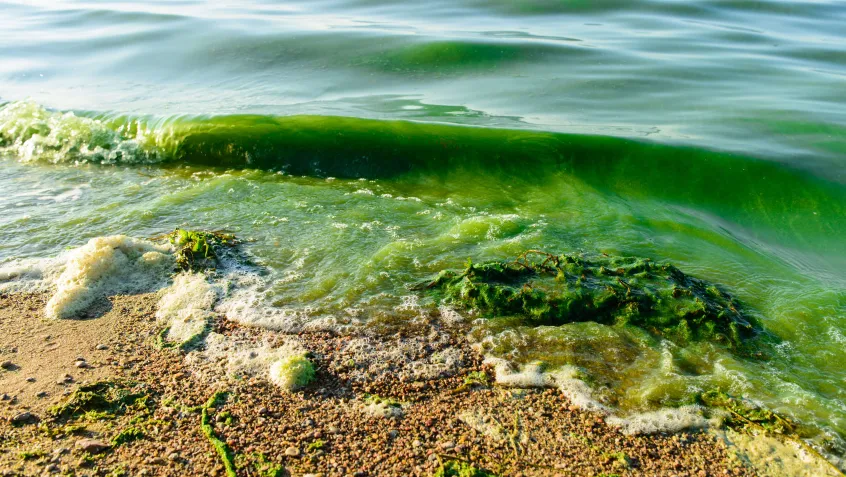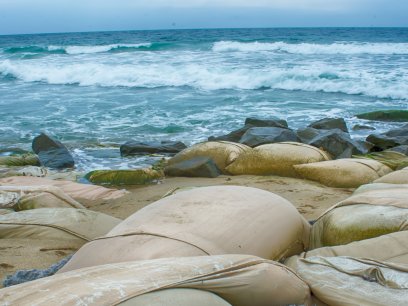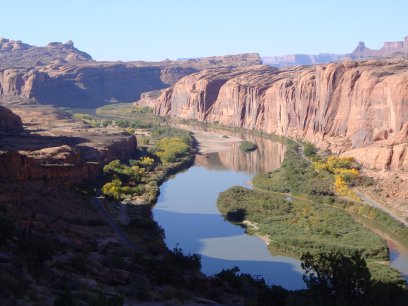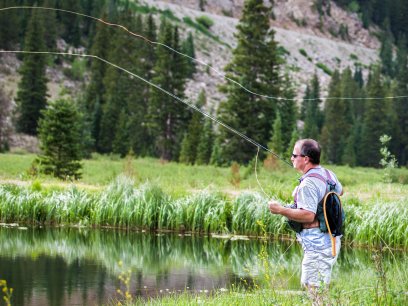
A fishing boat sets sail on the deep blue waters of the Gulf of Mexico under the hot midsummer sun, drawing a net through the open water to catch grouper. Reeling the net in hours later, there is no sign of any fish. The fishermen cast out the net again, wait for several more hours, and still reel nothing in. What could possibly be going on in this patch of the sea? These fishers are drifting through a dead zone—the results of which can be devastating for anglers, fisheries, and even human health.
What is a dead zone?
Dead zones refer to areas of water with little available dissolved oxygen. These areas are almost devoid of life, since neither fish nor plants can survive in these waters for very long. The Gulf of Mexico dead zone that forms each summer is the largest in the US and second largest in the world at about 8,770 square miles. That's almost the size of the state of New Jersey!
These dead zones form when algae, small life forms that make up the base of the food chain in the ocean, rapidly grow out of control. Their growth is spurred by an excess of nutrients, such as nitrogen or phosphorous, from agricultural fertilizers, which flow into waterways like the Mississippi River and make their way out into the open ocean. As the algae die and decompose, the chemical process of decomposition consumes the oxygen from surrounding waters, leaving little left for fish and other aquatic organisms. Sometimes these algae can release toxins that are dangerous to human health; if these zones form in lakes or rivers they can even contaminate drinking water, making dead zones a public health hazard!
What can we do about dead zones?
While the large dead zone in the Gulf of Mexico may be a challenging problem, much work is being done to address the issue. The EPA has created a task force charged with a goal to reduce the size of the dead zone to less than 5,000 square km (about 1,930 square miles). This entails working with states along the Mississippi River to monitor nitrogen and phosphorous and reduce nutrient discharge into the waterways.
There are easy actions you can take to reduce nutrient pollution in your community. You can:
- Pick up and properly dispose of pet waste, which is high in nitrogen and phosphorous;
- Maintain septic systems regularly to help save both money and the environment; and
- Reduce fertilizer use or even use compost instead to limit the amount of nutrients that could wash off of your property and end up downstream.
Sources:
- National Oceanic and Atmospheric Administration. 2017. “Gulf of Mexico ‘dead zone' is the largest ever measured.” Access August 6. http://www.noaa.gov/media-release/gulf-of-mexico-dead-zone-is-largest-ever-measured
- National Oceanic and Atmospheric Administration. 2018. “What Is a Dead Zone?” Accessed July 9. https://oceanservice.noaa.gov/facts/deadzone.html
- US Environmental Protection Agency. 2018. “Mississippi River/Gulf of Mexico Hypoxia Task Force.” Accessed July 2. https://www.epa.gov/ms-htf
- US Environmental Protection Agency. 2017. “The Effects: Dead Zones and Harmful Algal Blooms.” Accessed July 2. https://www.epa.gov/nutrientpollution/effects-dead-zones-and-harmful-algal-blooms


